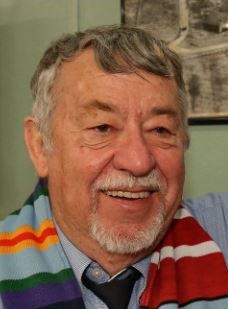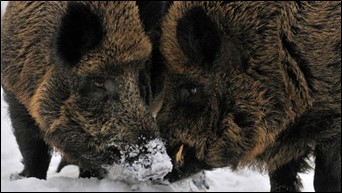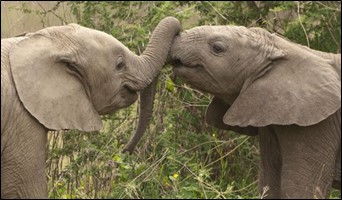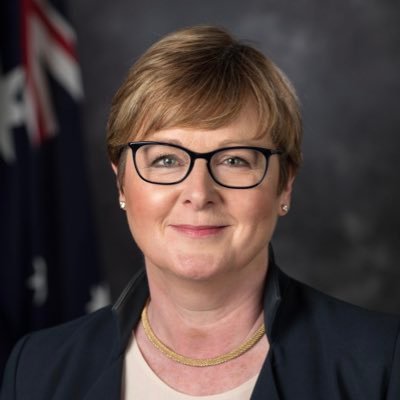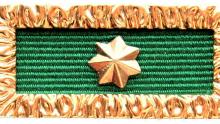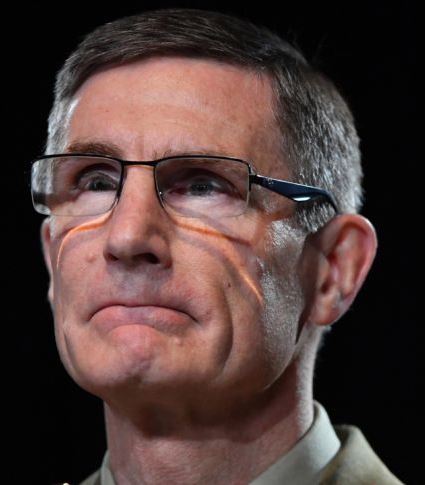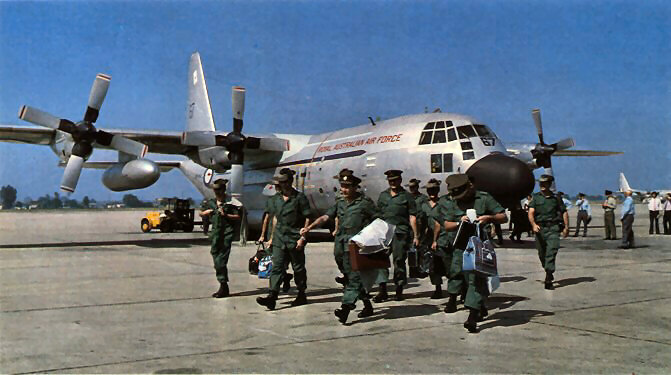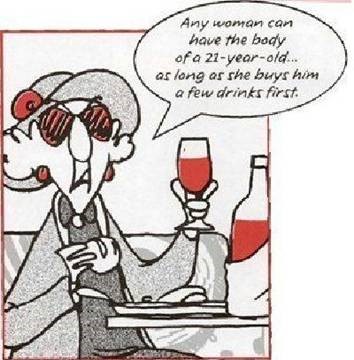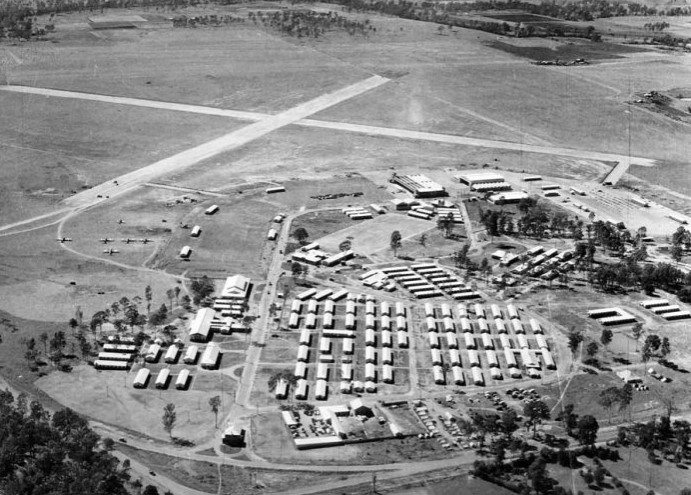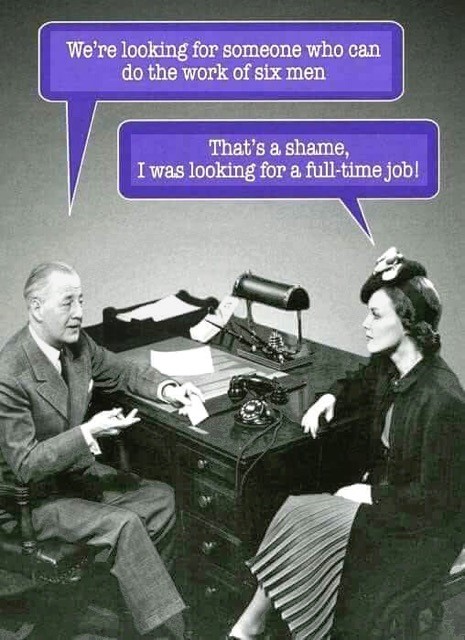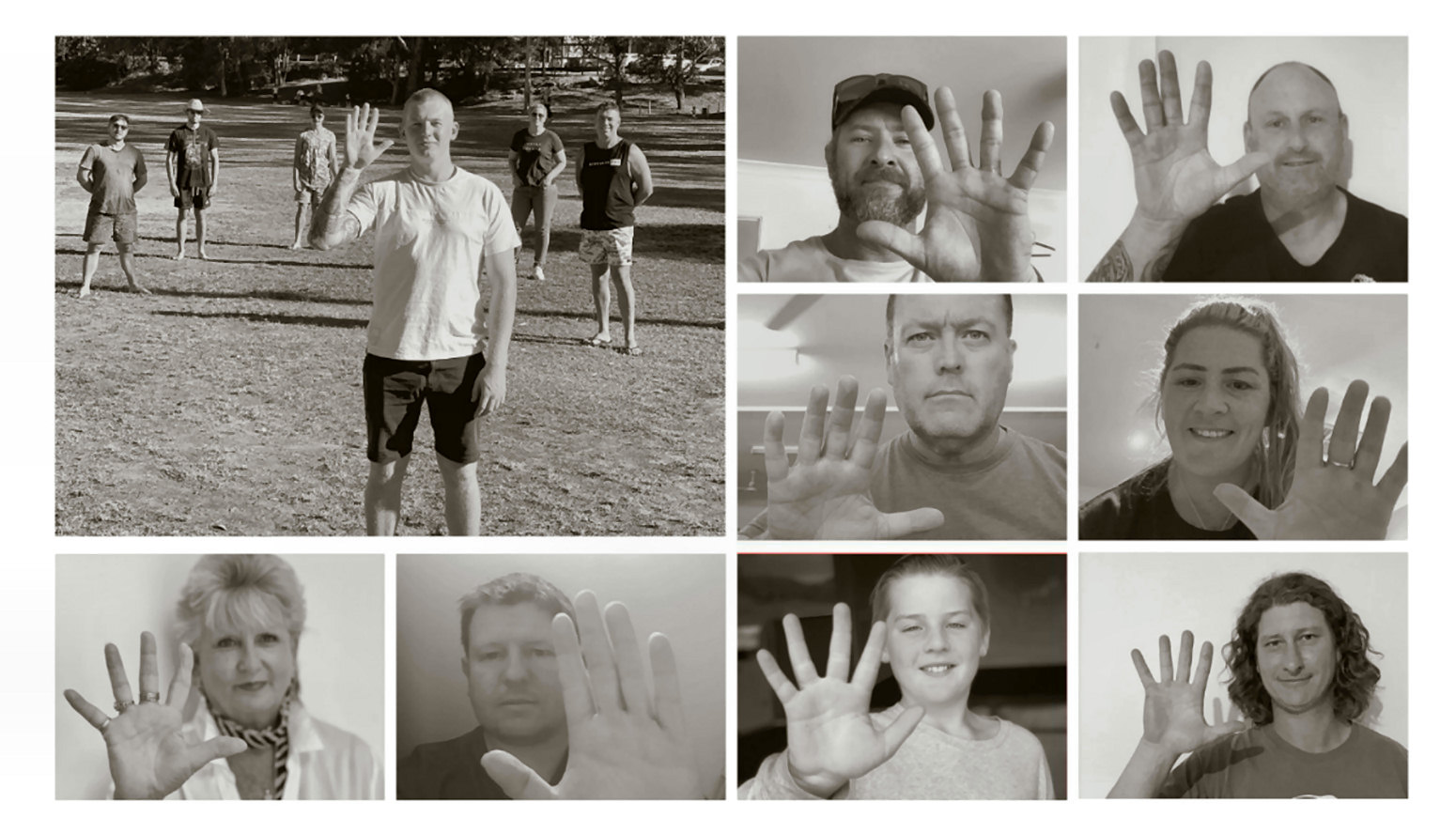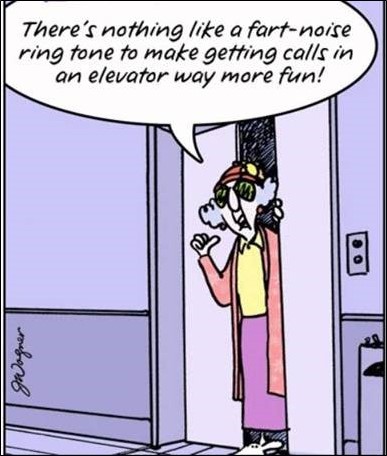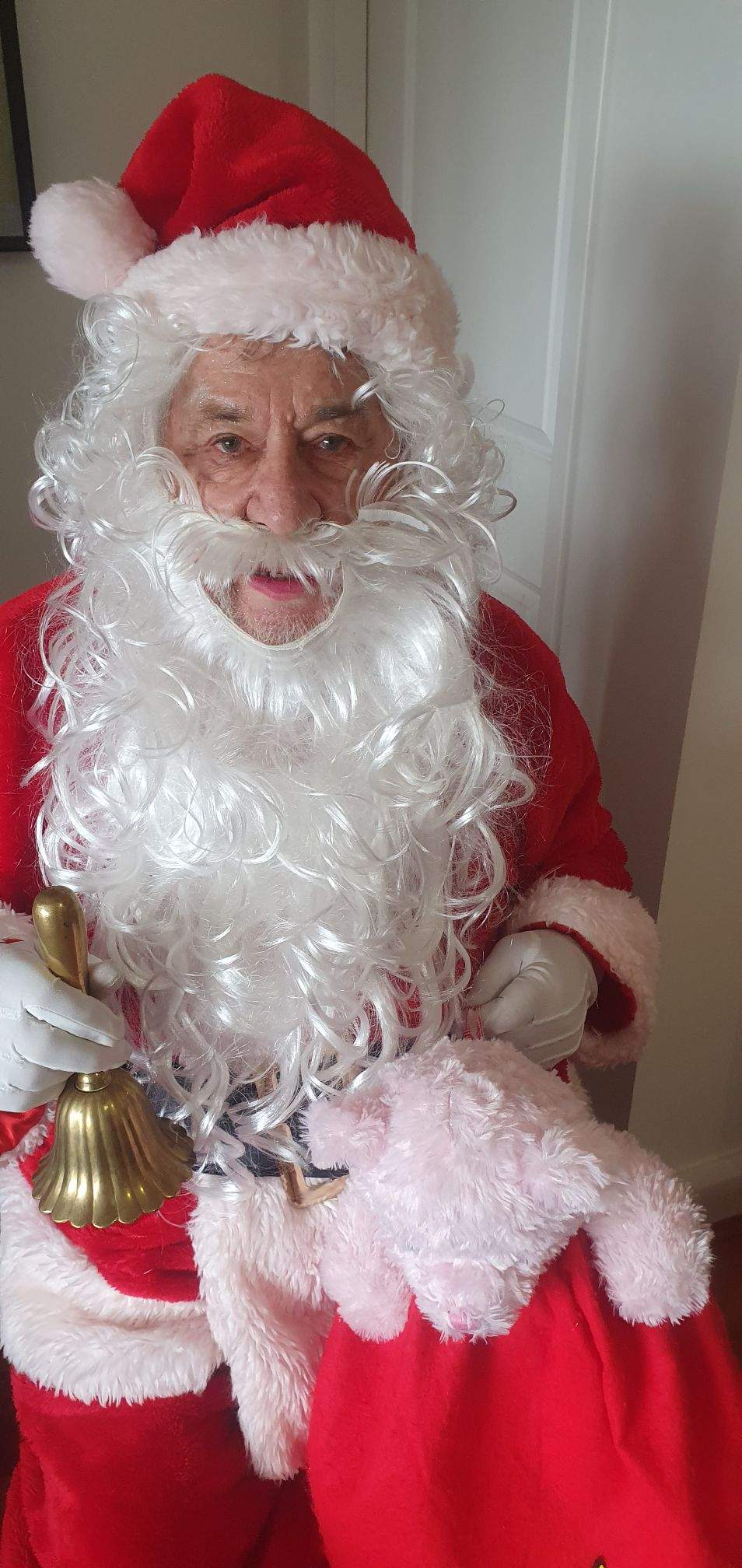|
|
||
|
||
|
Privacy Policy | Editorial Policy | Profit Policy | Join the Association | List of Members | Contact us | Index | Links |
||
|
Back Go to page: 1 2 3 4 5 6 7 8 9 10 11 12 13 14 15 16 17 18 19 20 Forward |
||
|
Out in the shed with Ted. |
||
|
|
||
|
|
||
|
Welcome to Kedron-Wavell Services Club. Located in the vibrant Chermside precinct, only 15 minutes north of Brisbane’s CBD, the Club is Brisbane’s award winning, premier function, entertainment and leisure destination.
With a cosmopolitan atmosphere and elegant features, Kedron-Wavell Services Club is the perfect place to meet your family and friends… or meet new friends! We’re easy to find and offer free off-street parking for members and guests.
|
||
|
|
||
|
Contents:
Electric vehicle battery life. Minister Reynolds - "Cold blooded murder".
|
||
|
Why Do We Kiss? What Science Says About Smooching.
It depends on who we’re kissing.
Humans pucker up for all kinds of reasons. We kiss for love, for luck, to say hello and goodbye. There’s also the whole ‘it feels so good’ thing.
And when you stop and really think about the act of kissing, it’s kind of strange, isn’t it? Pressing your lips against someone else and, in some cases, swapping saliva? It turns out there’s some science behind this strange but enjoyable behaviour.
There are many theories about how kissing originated and why we do it. Some scientists believe that kissing is a learned behaviour, since roughly 10 percent of humans don’t kiss at all and considerably fewer kiss with romantic or sexual intent. Others believe kissing is instinctual and rooted in biology. Have a look at some of the science behind kisses of all kinds and see what you think.
Some kisses are rooted in attachment.
Kissing causes a chemical reaction in your brain, including a burst of the hormone oxytocin. It’s often referred to as the “love hormone,” because it stirs up feelings of affection and attachment. According to a 2013 study, oxytocin is particularly important in helping men bond with a partner and stay monogamous. Women experience a flood of oxytocin during childbirth and breastfeeding, strengthening the mother-child bond. Speaking of feeding, many believe that kissing came from the practice of kiss-feeding. Much like birds feeding worms to their little chicks, mothers used to — and some still do — feed their children their chewed up food.
Some kisses are rooted in romantic love.
You know that high you feel when you’re head over heels for a new love and spending time canoodling with them? That’s the effect of the dopamine in your brain’s reward pathway. Dopamine is released when you do something that feels good, like kissing and spending time with someone you’re attracted to.
This and other “happy hormones” make you feel giddy and euphoric. The more you get of these hormones, the more your body wants them. For some, this may be more apparent at the start of a relationship, especially if most of your time is spent in a lip lock. If you can keep up a steady pace of kissing after that initial spark fizzles, you can continue to enjoy the benefits of those happy hormones.
You may even have a more satisfying relationship. In a 2013 study, couples in long-term relationships who frequently kissed reported increased relationship satisfaction.
And some kisses are spurred by your sex drive.
It’s no secret that some kisses are totally sex-driven and far from platonic. Older research shows that for women, kissing is a way to size up a potential mate. It also plays an important role in their decision to hit the sheets. Female participants said they were less likely to have sex with someone without kissing first. They also reported that how well someone kisses can make or break their partner’s chances of getting to third base.
t’s also been shown that men kiss to introduce sex hormones and proteins that make their female partner more sexually receptive. Open mouth and tongue kissing are especially effective in upping the level of sexual arousal, because they increase the amount of saliva produced and exchanged. The more spit you swap, the more turned on you’ll get.
Plus, kissing (of any type) just plain feels good.
You can thank the many nerve endings in your lips for their part in making kissing feel so very good. Your lips have more nerve endings than any other part of your body. When you press them against another set of lips or even warm skin, it just feels good. Combine that with the chemical cocktail released during kissing, and you’ve got a recipe that’s sure to give you all the feels. Along with the oxytocin and dopamine that make you feel affection and euphoria, kissing releases serotonin — another feel-good chemical. It also lowers cortisol levels so you feel more relaxed, making for a good time all around.
Not all cultures kiss.
Kissing as we do it today seems to be a fairly recent invention. The oldest evidence of a kissing-type behaviour comes from Hindu Vedic Sanskrit texts from over 3, 500 years ago. Kissing was described as inhaling each other's soul. In contrast, Egyptian hieroglyphics picture people close to each other rather than pressing their lips together.
So what is going on? Is kissing something we do naturally, but that some cultures have suppressed? Or is it something modern humans have invented?
|
||
|
Man walks into a bar. Lucky bastard! |
||
|
|
||
|
We can find some insight by looking at animals.
Our closest relatives, chimpanzees and bonobos, do kiss but as far as we know, other animals do not kiss at all. For chimpanzees, kissing is a form of reconciliation, it is more common among males than females, in other words, it is not a romantic behaviour.
Their cousins the bonobos kiss more often, and they often use tongues while doing so. That's perhaps not surprising, because bonobos are highly sexual beings. When two humans meet, we might shake hands. Bonobos have sex, the so-called bonobo handshake. They also use sex for many other kinds of bonding, so their kisses are not particularly romantic, either.
These two apes are exceptions. As far as we know, other animals do not kiss at all. They may nuzzle or touch their faces together, but even those that have lips don't share saliva or purse and smack their lips together. They don't need to.
Take wild boars. Males produce a pungent smell that females find extremely attractive. The key chemical is a pheromone called androsterone that triggers the females' desire to mate. Animals often release these pheromones in their urine. From a female's point of view this is a good thing, because males with the most androstane are also the most fertile. Her sense of smell is so acute, she doesn't need to get close enough to kiss the male.
The same is true of many other mammals. For example, female hamsters emit a pheromone that gets males very excited. Mice follow similar chemical traces to help them find partners that are genetically different, minimising the risk of accidental incest. Animals often release these pheromones in their urine. Their urine is much more pungent, if there's urine present in the environment they can assess compatibility through that.
It's not just mammals that have a great sense of smell. A male black widow spider can smell pheromones produced by a female that tell him if she has recently eaten. To minimise the risk of being eaten, he will only mate with her if she is not hungry.
The point is, animals do not need to get close to each other to smell out a good potential mate.
|
||
|
My wife wanted to disgrace me in the presence of her friends, She said I wasn’t good in bed. She was shocked when they all disagreed with her. |
||
|
|
||
|
On the other hand, humans have an atrocious sense of smell, so we benefit from getting close. Smell isn't the only cue we use to assess each other's fitness, but studies have shown that it plays an important role in mate choice. Men also make a version of the pheromone that female boars find attractive. A study published in 1995 showed that women, just like mice, prefer the smell of men who are genetically different from them. This makes sense, as mating with someone with different genes is likely to produce healthy offspring. Kissing is a great way to get close enough to sniff out your partner's genes.
A study in 2013, examined kissing preferences in detail. It asked several hundred people what was most important when kissing someone. How they smelled featured highly, and the importance of smell increased when women were most fertile. When, in their sweat, males make a version of the pheromone that female boars find attractive and when women are exposed to it, their arousal levels increase slightly.
Pheromones are a big part of how mammals chose a mate and we share some of them. We've inherited all of our biology from mammals, we've just added extra things through evolutionary time. You could forego kissing and start smelling people instead. On that view, kissing is just a culturally acceptable way to get close enough to another person to detect their pheromones.
In some cultures, this sniffing behaviour turned into physical lip contact. It's hard to pinpoint when this happened, but both serve the same purpose.
So if you want to find a perfect match, you could forego kissing and start smelling people instead. You'll find just as good a partner and you won't get half as many germs. Be prepared for some funny looks, though.
My body has absorbed so much soap and disinfectant lately, that when I pee it cleans the toilet.
Kissing feels great and does the body good. It can help people feel connected and strengthen bonds of all kinds. Just remember that not everyone wants to be kissed or sees kissing the way you do. It doesn’t matter if you’re greeting someone new, puckering up to peck a bestie, or going into a smooch sesh with a romantic interest — you should always ask before you smooch.
And don’t forget to practice good oral hygiene for a fresh, kiss-worthy mouth.
|
||
|
|
||
|
|
||
|
||
|
|
||
|
The word “queue” is just a Q followed by four silent letters.
|
||
|
“Cold-blooded murder”: Minister Reynolds rejects fog-of-war claims.
Recently the Minister for Defence, Senator Linda Reynolds, upped the ante against the blokes “accused” of war crimes in Afghanistan. Not waiting for those accusations to be heard and proven in Court, she accused those men of committing “Cold blooded murder”.
This follows that ridiculous statement from the Chief of the ADF, General Angus Campbell, where he accepted that other utterly ridiculous recommendation made by Paul Brereton, to strip the Special Operations Task Group of a Meritorious Unit Citation they had so justly earned and which was so justly deserved.
Are these people mad?
This is the Citation, it is proudly worn on the right hand side by those who have earned it. It is an award given in recognition for heroic courage and extraordinary gallantry in action. It is not a blanket award and not given to everyone in the unit, only to those that were in the unit at the time of the action.
Some of the men who were awarded the Citation had been posted to Afghanistan on multiple occasions and were involved in some ferocious fighting, actions that will stay with them for the rest of their lives. Some might have stuffed up, but the majority of them didn’t – in those terrible times they acted gallantly and with honour and rightly deserve everything they can get. When awarded the Citation, Politicians were thick on the ground, basking in their honour, strutting the stage, soaking up the publicity as they so hypocritically do yet when they thought there were Brownie points to be earned by trashing the Unit, they jumped the fence quick smart.
But they read the tea-leaves very wrongly this time, the public were appalled at the suggestion and let them know in no uncertain terms and all, bar Senator Reynolds, have back-peddled at a million miles an hour. What Brereton, Campbell (right) and Reynolds were thinking is anyone’s guess but it looks like sanity will prevail and the citation will stay – where it belongs.
Reynolds has said that reading the Brereton report made her “physically ill”. She said “I cannot unsee what I’ve read and the implications of that, all of the matters in his (Brereton) report are not those fog-of-war, split-second decisions about what I do next. These are all incidents of alleged cold-blooded murder”.
She obviously doesn’t need to have those allegations tested in a court, she just knows. She doesn’t give a damn about the well-being of the poor blokes she sent over there, who would have to shoot and be shot at, to be forced to kill or be killed, to be absolutely shit-scared at times and who would have to relive those terrifying moments for the rest of their lives. She doesn’t give a damn that a lot of them couldn’t live with those terrors and have taken their own lives, she doesn’t give a damn about the distraught families left behind, she just wants the hi-light and wants to bash those “Cold-blooded Murderers.”
Well, what she says makes me sick.
Someone who has barked up and vehemently disagreed with her is former Special Forces veteran Heston Russell. When told by ABC journalist Andrew Probyn the incident “doesn’t look like the heat of battle”, he said he did not want to prejudge the incident. He claimed special forces were permitted to capture or kill anyone on the Joint Priorities Effect List (JPEL), “under any legal authority (and) could do so in any circumstances”. He said “I was not there and it is not right for me to comment. Unless you were there and understand the heat of battle I am not going to dive into opinions.”
Heston Russell recently gave an interview along with Senator Jacqui Lambie and which includes some wonderful words from Bob Katter, you can see it below. |
||
|
|
||
|
Public backlash has been deafening, with the vast majority against the official ADF's handling of this issue. It seems the ADF has become quite “sissy” under its recent leadership, apologising for anything and everything, mea culpa, mea culpa – don’t be surprised if there are some significant changes made over the Christmas break, hopefully starting at the top. The ADF could, once again, do with a back bone.
Charlie Lynn, Vietnam Vet and ex NSW Politician says it all - see HERE.
Perhaps some of those who tried to make a big name for themselves by jumping in feet first should read THIS and THIS.
|
||
|
Last Herc from Vietnam.
On the 20th December, 1972, an E model Hercules from 37 Sqn, became the last Hercules flight bringing Australian troops home from Vietnam. Landing at RAAF Richmond, it marked the end of an Australian strategic airlift -- which included chartered QANTAS and other domestic aircraft which supported the Army, RAN and RAAF as well as Australian civil aid projects and the NZ Army.
Nos 36 and 37 Squadrons also flew home more than 3,000 sick and wounded servicemen. The first Hercules missions to Vietnam supported the deployment of the RAAF Caribou Flight to Vung Tau in 1964 and later airlifts were undertaken when combat forces were deployed (1st Battalion, Royal Australian Regiment) to Bien Hoa.
|
||
|
|
||
|
|
||
|
Amberley.
On the 22 December, 1938, RAAF Base Amberley was formally gazetted, declaring that an area of about 882 acres (330 hectares) had been acquired by the Commonwealth for Defence purposes at Amberley.
The base was initially planned with a general purpose RAAF Squadron (No 24 Squadron), initially with 300 men. The name 'Amberley’ was chosen after the Sussex (UK) home town of the district's pioneer farmer, James Collett. who owned the land on which the base was built. RAAF Base Amberley commenced operations in June 1940.
RAAFA Publications has produced an informative little booklet titled “Welcome to Amberley”. You can read it HERE.
I think THIS is funny, and so is THIS and THIS. If you can’t laugh at yourself, you shouldn’t be laughing.
|
||
|
Electric vehicle battery life.
Plug-in electric vehicles (EVs) are as safe and easy to maintain as conventional vehicles. While driving conditions and habits will impact vehicle operation and vehicle range, some best practices can help you maximize your all-electric range.
Safety.
EVs must undergo the same rigorous safety testing and meet the same safety standards required for conventional vehicles as well as EV-specific standards for limiting chemical spillage from batteries, securing batteries during a crash and isolating the chassis from the high-voltage system to prevent electric shock. In addition, EVs tend to have a lower centre of gravity than conventional vehicles, making them less likely to roll over and often improving ride quality.
One safety concern specific to EVs is their silent operation; pedestrians may be less likely to hear an EV than a conventional vehicle. The US National Highway Traffic Safety Administration is studying ways to address this issue, such as requiring EVs to emit audible sounds at low speeds. This option is already available on many EVs, including the Chevrolet Volt and Nissan Leaf. In any case, you should use extra caution when driving your EV in pedestrian areas.
Vehicle Maintenance.
Because of their differing technologies, all-electric vehicles (AEVs) and plug-in hybrid electric vehicles (PHEVs) have different types of required maintenance. Both will require minimal scheduled maintenance to their electrical systems, which can include the battery, electrical motor, and associated electronics, however, because of regenerative braking, brake systems on EVs typically last longer than on conventional vehicles.
In general, AEVs require less maintenance than conventional vehicles because there are usually fewer fluids (like oil and transmission fluid) to change and far fewer moving parts. In contrast, because PHEVs have gasoline engines, maintenance requirements for this system are similar to those in conventional vehicles.
Battery Life.
Like the engines in conventional vehicles, the advanced batteries in EVs are designed for extended life but will wear out eventually. Currently, most manufacturers are offering 8-year/100,000-mile warranties for their batteries but most will last up to 20 years. This might seem remarkable when the battery in your mobile phone begins to wear out after only a couple of years, but during that time it might be fully charged and discharged hundreds of times. Each of these so-called charge cycles counts against the life of the battery, after perhaps 500 full cycles, a lithium-ion phone battery begins to lose a significant part of the capacity it had when new.
While that might be OK in a phone, it's not good enough for a car designed to last many thousands of miles, so EV manufacturers go to great lengths to make electric car batteries last longer. In an EV, batteries are 'buffered', meaning that drivers can't use the full amount of power they store, reducing the number of full cycles the battery goes through. Together with other techniques such as clever cooling systems, this means that electric car batteries should give many years of trouble-free life.
The cost of batteries fell by about 80% between 2010 and 2016, from $1,000/kWh to $225/kWh and with more and more of them being made, costs are sure to fall even further. By the time the current crop of EVs need a battery replacement, the cost will probably be about the same as a conventional petrol/diesel engine overhaul.
There are a large number of electric car battery manufacturers. Some are well known such as Tesla and Nissan, while others such as BYD or LG Chem, may not be as well-known around the world, but are nevertheless, significant players in the electric car battery manufacturing space. LG Chem for instance, supply electric vehicle batteries for the likes of Volvo, Renault, Ford and Chevrolet. Not only that, they have also signed an agreement with Tesla to supply all Tesla produced in China with batteries.
Another major electric vehicle manufacturer BYD are China's largest electric vehicle manufacturer and are now, since the turn of 2019, selling more electric vehicles than fossil fuel powered vehicles. Not only are these battery manufacturers focusing on electric vehicles, but they are also working on battery storage of electricity for residential, commercial and industrial applications.
Wastage
So what happens when electric car batteries die? Batteries of all forms can prove difficult to dispose of without harming the environment. The same goes for EV batteries, however, EV battery life cycle management works towards solving expensive and toxic disposal of the batteries.
The time that batteries spend in an EV is often just the beginning of their useful life. Once removed from a car, most batteries will still be fit for other demanding jobs like energy storage in the electricity network, or in the home – a growing area of demand. As well as being used to support the use of renewable energy, EV batteries can be refurbished to help power more vehicles in the future. Volkswagen Group has plans to start a recycling project that will see batteries assessed on their quality to determine their future. The batteries with some power left will be given a second life as power packs for mobile vehicle charging. The others that have little to give, will be ground down to fine powder to extract raw materials such as nickel, manganese and lithium. The materials can then be rebuilt into more EV batteries.
Many manufacturers are researching how EV batteries can be repurposed once they have hit retirement age, however, there are no definitive answers as to what will happen to EV batteries once they’re no longer recyclable.
When batteries do reach the end of their working life, they'll be recycled, which typically involves separating out valuable materials such as cobalt and lithium salts, but at the moment, only about half of the materials in an EV battery pack are recycled. With EVs expected to undergo an explosion in popularity over the next decade or so, car manufacturers are looking to improve this.
There is an excellent video explaining all this and showing how batteries actually work, you can watch it HERE.
|
||
|
And THIS is definitely funny!
|
||
|
|
||
|
|
||
|
The Army at a glance!,
A friend once told me he didn’t understand the military system. Dumb civilian, I said to my- self, but openly I said, “The system is really quite simple.
You see, all people in the Army are soldiers, all privates are soldiers, but not all soldiers are privates. Some are officers who are commissioned, but some are officers who are not commissioned. Obviously if every private was called private it would be confusing, so some privates are called things like trooper, driver, gunner, craftsman, sapper or signaller. Not all of the drivers actually drive because some of them cook, but we don’t call them cooks, for that matter, not all drivers are called drivers – some of them are privates or gunners. Gunners as I’m sure you know are the blokes that fire guns, unless of course they are drivers or signallers in which case we call them gunners rather than drivers or signallers just to make it clearer.
All gunners belong to the artillery, except that in the infantry we have gunners who are called privates because they fire a different sort of gun, for the same reason we call our drivers and signallers private as well. A Lance Corporal is called Corporal, unless he is a Lance Bombardier then we call him Bombardier to distinguish him from a full Bombardier, who is just like a Corporal. All other ranks are called by their rank for the sake of simplicity except that Staff Sergeants are called Staff, but they are not on the staff, some Warrant Officers, who are not officers, are called Sergeant Major although they are not Sergeants or Majors.
Some Warrant Officers are called Mister which is the same thing that we call some officers but they are not Warrant Officers. A Lieutenant is also called Mister because they are subalterns, but we always write their rank as Lieutenant or Second Lieutenant, and second comes before first.
When we talk about groups of soldiers there obviously has to be clear distinction. We call them Officers and Soldiers although we know that officers are soldiers too, sometimes we talk about officers and other ranks which is the same as calling them soldiers. I guess it is easiest when we talk about rank and file which is all the troops on parade except the officers and some of the NCOs— and a few of the privates – and the term is used whether everyone is on parade or not.
A large unit is called a battalion, unless it is a regiment but sometimes a regiment is much bigger than a battalion and then it has nothing to do with the other sort of regiment. Sub units are called companies unless they are squadrons or troops or batteries for that matter. That is not radio batteries and don’t confuse this type of troop with the type who are soldiers but not officers. Mostly the Army is divided into Corps as well as units, not the sort of Corps which is a couple of divisions but the sort which tells you straight away what trade each man performs, whether he is a tradesmen or not.
The Infantry Corps has all the infantrymen for example and the Artillery Corps has all the gunners. Both these Corps also have signallers and drivers except those who are in the Signals or Transport Corps. In fact, the Signals Corps is not a service at all because it is an Arm. Arms do all the fighting, although Signals don’t have to fight too much, rather like the Engineers who are also an Arm but they don’t fight too much either.
So you see, it’s really quite simple.
|
||
|
Can you believe this?
Bananas at $5.99 a kilo!
|
||
|
#Check5 Information Pack
Check5 this holiday period - we encourage all veterans and their family members to square away their mental health and check in with 5 people in their lives and challenge them to #Check5. Connect with them, yarn with them and motivate them to act.
This is a grassroots social media campaign ‘#Check5’. It builds on a suicide prevention campaign that started in Townsville as a part of Operation Compass’ ‘Check Your Mates’. The campaign aims to build a network of serving and ex-serving military personnel and families, empowered to support each other over the Christmas and summer holiday period. The premise of ‘Check5’ is simple: commit on social media to check in with five mates and challenge them to check in with five mates.
It also builds on a current Open Arms campaign #Squared Away. The square away resources empower individuals with knowledge to maintain their own mental health while providing access to training in mental health first aid training and suicide prevention training to equip them to support others. Therefore, in support of the campaign, this information pack contains tools and resources that can help support your participation in ‘#Check5’. The pack includes information on how people can connect, have difficult conversations, access free, online, one hour suicide prevention training, and refer to support available over Christmas and the summer holidays.
Campaigns like ‘#Check5’, reminds us all of the power we have to improve each other’s wellbeing and of the range of mental health support services that are available, including the vital and complementary role you and your organisation provides. This weekend, the Open Arms Community and Peer Teams, will start posting about ‘#Check5’ nationally, along with the team at Oasis in Townsville. We ask you to join with us, in supporting this campaign.
|
||
|
|
||
This is an example of the image that one of our peer workforce will use when they are checking in on their network. We are encouraging everyone to be creative with their imagery and videos but to #Check5.
The goal is a message of positive support in the community and a call to action.
Importantly, when discussing suicide with individuals or publically, to affect positive change, it is key that you do NOT talk about the number of deaths by suicide or the means.
Information resources.
This information will also be available on the Open Arms – Veteran & Families Counselling website on a campaign page, but please use it on any communication channels that you have available.
Resource 1: Text that could be used as a lead paragraph on your website or to share with your network.
What is #Check5
This year has presented significant challenges for parts of the Australia community, including the veteran community. It has been a year of natural disasters and the COVID-19 pandemic and the release of the IGADF Report. Furthermore, while the Christmas and summer holiday period is a time of celebration and connection with family and friends for most, for some it can be a difficult time that may involve loneliness and isolation. However, it has also been a year of maintaining mental health and wellbeing across the community and people are recognising the power of connection. Connection with others is a powerful tool in the prevention of suicide, especially when supported with the knowledge of how to check in on family members and peers.
Campaigns like ‘#Check5’, reminds us of the power of we have to improve each other’s wellbeing and of the range of mental health support services that are available, including the vital and complementary role you and your organisation provides. We ask you to join with us in supporting this campaign.
We are asking all connected to the veteran community to:
Resource 2: This text can be used to give participants ideas on how they can connect within their network.
Plan to connect
There are a range of ways for us to connect with each other, take time to:
Write: This could be a text or an email to a mate. A simple message can be:
Call: We all like to hear a friend’s voice or see their face. After this year in particular there are a range of methods to do so that we have become experts in, such as FaceTime, Zoom and Skype.
Visit: Sometimes it is easier to connect through activity. Consider a BBQ or a walk – something that gets you moving and can create a good opportunity to reach out to someone in a casual and comfortable situation. Where relevant, you should consider any current restrictions put in place by Australia's federal, state and territory governments to slow the spread of COVID-19. If someone checks in with you it is too ease to say you're fine, it is important that if you’re finding life hard ,we all trust our network and have the courage to let them know when we do need to talk.
Resource 3: This text can be used to support individual who are concerned about having difficult conversations or who want to learn more about suicide prevention.
Difficult Conversations
Sometimes when we connect we will find that a friend is struggling. It is important to remember that when this happens, sometimes all they need is someone to talk to and an ear to listen. It is crucial that if they do admit that they are not ok, you take the time to listen to them and support them.
To prepare for difficult conversations, remember there is a range of resources and support available for you and the person you are helping throughout the entire holiday period. People can access the Open Arms website 24/7 which includes information on services available, helpful resources on living well, as well as a number of helpful courses.
Open Arms also provides free access to the LivingWorks Start program, a one hour online program that teaches participants how to recognise when someone is thinking about suicide and how to connect them to help and support. You can access it HERE.
Resource 4: provides information on the range of services available to the veteran community over the holiday period.
Serving and ex-serving personnel and their families have access to a range of support options from the Department of Veterans’ Affairs (DVA) and the Department of Defence over this Christmas and Holiday Period. Ex-Service Organisations (ESOs) also provide a critical role in supporting our people and their families. This includes support for mental health, wellbeing, medical, compensation and income support, transition to civilian life, and, in some cases, legal support.
Support services available this Holiday period include:
|
||
|
|
||
|
|
||
|
Flu Tracking.
What is flu tracking?
Flu tracking is an online health surveillance system used to detect the potential spread of influenza. Whether you're vaccinated or not, as long as you live in Australia or New Zealsnd and have easy access to the email on a weekly basis, we need your help.
FluTracking is a surveillance system that harnesses the power of the internet and community spirit for monitoring influenza. By taking part, you’ll not only be contributing to scientific research, but you will also be helping to track influenza in your local community and nation-wide. Over the 14 years the survey has been running in Australia (and now in New Zealand) we have grown to over 140,000 participants per week who have collectively completed over 6.5 million surveys!
A simple online survey that takes less than 15 seconds each week during flu season can tell us so much.
The main aims of FluTracking are to develop a system that can provide:
Weekly Survey
After registering as a volunteer FluTracker, you’ll receive a weekly email from us during the traditional flu season (April/May to October). The email contains a link to an online survey form.
On the first visit you’ll be asked to provide the following information:
On subsequent weekly visits to the form, you’ll be asked about the presence of typical flu-like symptoms like:
If you answer ‘yes’ to a symptom, you’ll get these follow-up questions about:
I've been doing it for some time now, and it does't hurt a bit. Please click HERE to join now.
|
||
|
|
||
|
|
||
|
Merry Christmas everybody! |
||
|
|
||
|
Back Go to page: 1 2 3 4 5 6 7 8 9 10 11 12 13 14 15 16 17 18 19 20 Forward |
||
|
|

